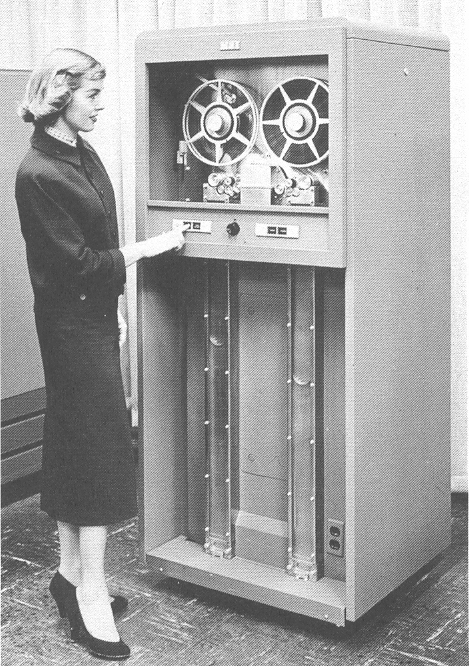IBM 701 Tape Drive
The First Magnetic Tape Drive for Computer Data
Storage

The first magnetic tape drives were successfully demonstrated on the TPM and then adapted to the 701 (also known as the Defense Calculator), IBM's first commercial computer, which could accommodate four tape drives. The 701 tape drive shown above recorded 100 characters per inch and had a throughput of 70 inches (or 7000 characters) per second. [4]. The Model 727 (which evidently was an improvement on the unit shown above and described in [4]) was 200cpi and 75 inches/sec (or else [4] is wrong).
Tapes were half an inch wide (a standard that would last 40 years) and 1400 feet long, with 7 recording tracks (6 for data, 1 for error checking). This was the first commercial magnetic tape drive for a computer. The general design would remain the same until the demise of half-inch reel-to-reel tapes in the 1990s, with only incremental improvements: more (9) tracks, increased recording density (200, 556, 800, 1600, 6250 bpi/cpi), automatic recognition of different densities, longer tapes (2400 and 3600 feet), greater speed, and automatic loading (compare with the DEC TU-45 from 1977). In the heydey of magnetic tape, large data centers had big tape libraries for offline storage; some of the largest might still exist (US Social Security Administration; US Internal Revenue Service; the Mormon Genealogical Database — these were on tape until recently and might still be).